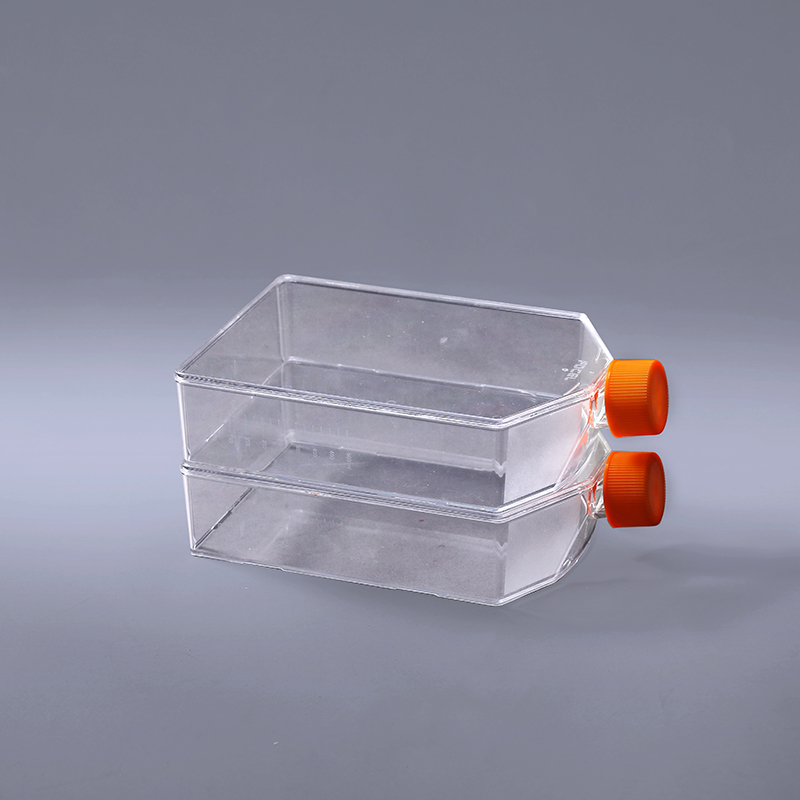The cell culture flasks is made of medical grade polystyrene material with high transparency. According to different surface treatment processes, it is divided into two types: hydrophilic and hydrophobic.
Hydrophilic cell culture flask: used for the cultivation of adherent cells. The growth of such cells must have a support surface that can be attached, and the cells can grow and reproduce on this surface by relying on attachment factors secreted by themselves or provided in the culture medium. The surface of the bottle has undergone a special modification treatment to introduce hydrophilic groups. The purpose of this is to increase the adhesion performance of the bottle surface, which is more suitable for cell growth.
Hydrophobic cell culture flask: used for the cultivation of suspension cells. The growth of these cells does not depend on the surface of the support and grows in suspension in the culture medium. Such cells are called suspension cells. Such as lymphocytes. Polystyrene generally has a head-to-tail structure, the main chain is a saturated carbon chain, and the side group is a conjugated benzene ring, which makes the molecular structure irregular, increases the rigidity of the molecule, and makes PS a non-crystalline linear polymer. It has a certain degree of hydrophobicity, so the surface can be used for suspension cell culture without special treatment.
The above are two types of cell culture flasks, which are mainly suitable for medium-scale cell and tissue culture in the laboratory. The wide bottleneck design facilitates the pipette and cell scraper to contact the growth surface.
The FAI climbed 5.9 percent year-on-year in the first 11 months of 2018, quickening from the 5.7-percent growth in Jan-Oct, the National Bureau of Statistics (NBS) said Friday in an online statement.
The key indicator of investment, dubbed a major growth driver, hit the bottom in August and has since started to rebound steadily.
In the face of emerging economic challenges home and abroad, China has stepped up efforts to stabilize investment, in particular rolling out measures to motivate private investors and channel funds into infrastructure.
Friday's data showed private investment, accounting for more than 60 percent of the total FAI, expanded by a brisk 8.7 percent.
NBS spokesperson Mao Shengyong said funds into weak economic links registered rapid increases as investment in environmental protection and agriculture jumped 42 percent and 12.5 percent respectively, much faster than the average.
In breakdown, investment in high-tech and equipment manufacturing remained vigorous with 16.1-percent and 11.6-percent increases respectively in the first 11 months. Infrastructure investment gained 3.7 percent, staying flat. Investment in property development rose 9.7 percent, also unchanged.
 English
English



















































